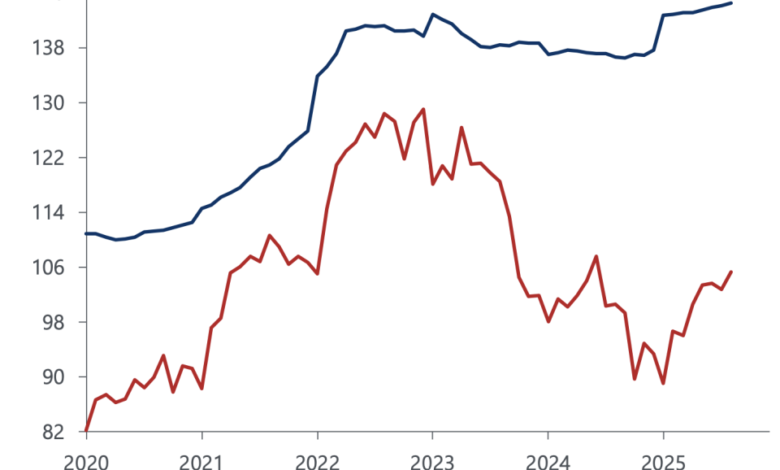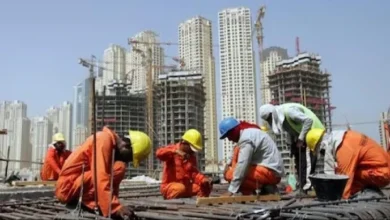Rural America’s farm economy is struggling with its own K shape, as government payouts rocket to crisis levels

The letter K has become popular recently when describing the American economy in which the wealthiest Americans thrive while everyone else struggles to survive.
But another K-shape has taken over the agricultural economy: costs continue to rise while crop prices fall.
Crop prices rose during the pandemic, then declined from 2022 through 2024, and only a modest amount of land has recovered this year. But costs have not fallen, and President Donald Trump’s trade war has prompted China to stop buying American soybeans.
The trends have converged in a “perfect storm” this year, but date back to the middle of the last decade, according to Bernard Yaros, chief US economist at Oxford Economics.
In a note last week, Yaros noted that crop prices that farmers have been receiving for years have not kept up with production costs such as fuel, fertilizer and machinery.
Yaros added that the Federal Reserve’s aggressive interest rate hike cycle in 2022 and 2023 to combat inflation added to farmers’ costs as interest rates on farm loans rose to finance routine expenses, capital spending and farmland purchases.
Today, the result is a giant K carved into the agricultural sector.
Meanwhile, farm bankruptcies are trending higher, with the fastest growth in major soybean-producing states, according to Yaros.
The federal government has certainly stepped up its support for farmers. The “Big, Beautiful Bill” signed into law in July included about $66 billion in agriculture-focused spending. The vast majority, about $59 billion, has been allocated to strengthening agricultural safety nets.
The Ministry of Agriculture estimates that real net agricultural income will jump by about 40% this year after two years of decline. About three-quarters of this growth is due to government payments, Yaros noted.
“As a share of GDP, government payments will approach levels rarely seen outside of the 1980s agricultural crisis and farm aid packages under Trump’s first presidency,” he added.
The outlook for crop prices does not look good either, threatening to keep the agricultural economy K-shaped for much longer.
China has so far shown no signs that it will buy 12 million metric tons of soybeans by the end of the year, threatening non-compliance with the trade agreement Trump negotiated last month.
Meanwhile, farmers who switched to other crops when China wasn’t buying soybeans are seeing prices for corn, wheat and barley fall as supply of these commodities now increases.
A recent study by economists AgWeb Farm Magazine It presented a bleak picture characterized by collapsing profit margins, limited business opportunities, and stubbornly high costs.
In fact, 59% said the agricultural economy has worsened compared to the previous month, nearly 90% believe it has become weaker over the past year, while 76% see conditions continuing or deteriorating through 2026.
“Things are bad — even if not the same kind of bad as they were in the 1980s,” one economist said. “The difference this time is a slow burn instead of a collapse.”
Don’t miss more hot News like this! Click here to discover the latest in Business news!
2025-11-17 17:57:00




